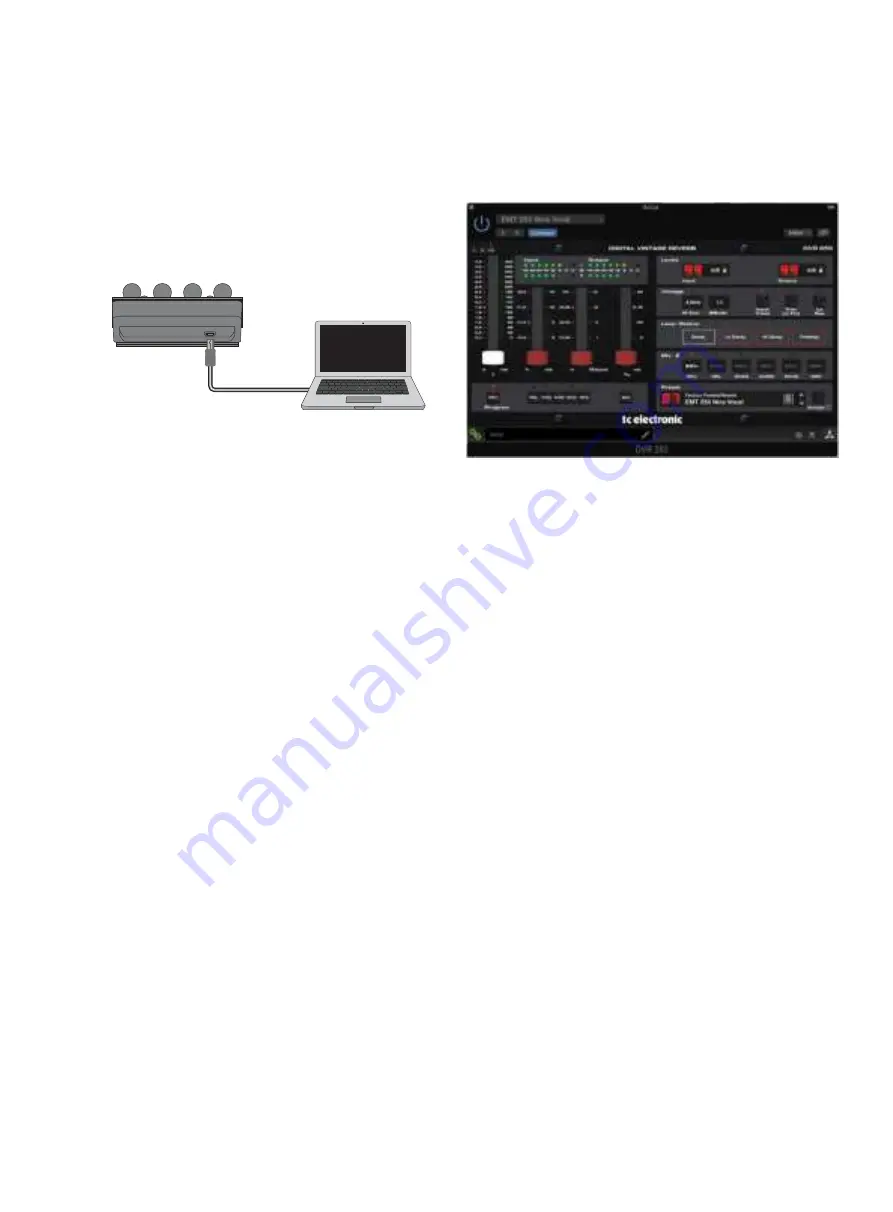
8
DVR250 User Manual
4. Connection and Setup
4.1 Connecting the DVR250-DT Desktop
Controller (when you have purchased the DT
Desktop Controller version)
Getting the Desktop Controller up and running couldn’t get any easier. Plug the
included USB cable into the unit’s rear micro-USB port, and connect the other end
to a free USB port on your computer. The Desktop Controller is bus powered so no
other power cables are necessary, and no additional drivers need to be
manually installed.
The Desktop Controller will light up upon successful connection. You can now
apply the plug-in to a channel in your DAW to begin using the e
ffect. This process
may vary slightly depending on your software, but generally should require
these steps:
•
•
Select a channel or bus in your DAW to which you would like to add the
effect Access the mixer page where you should see a section dedicated to
effect slots
•
•
Open the menu where you can select from a list of effect types, which
probably includes many stock plugins that are included with the DAW.
There should be submenu to view general VST/AU/AAX options.
•
•
The plug-in will likely be found in a dedicated TC Electronic folder. Select the
DVR250 and it will now be added to the signal chain.
Double click on the effect slot that contains the DVR250 to view the plug-in UI.
There should be a green link icon at the bottom, and text that indicates successful
connection between the plug-in and the Desktop Controller.
Note:
The iLok License Manager needs to be installed on your computer also if
you have purchased the DT Desktop Controller version. In this case you don’t need
to create an iLok account or activate any license.
4.2 Operating the DVR250
After you have installed the plug-in, and either activated the iLok license or
connected the DVR250-DT Desktop Controller via USB, you can begin inserting
the plug-in to your tracks.
Adjustments to the effect are done in two ways. Either by using the plug-in user
interface or via the physical Desktop Controller.
4.3 Insert vs Aux Effect
The DVR250 can be inserted directly into an effect slot on a single channel,
as described above, which passes the entire signal through the effect.
However, the DVR250 can also be added to an auxiliary bus, and one or more
channels can send a portion of their signal to this bus to be processed by the effect.
The output of the effect is then mixed back in with the rest of the tracks. This
differs from an insert effect in that the DVR250 isn’t affecting the track’s entire
signal, so modulation effects like the Chrous and static Phase in DVR250 generally
shouldn’t be used this way. In this setup, the Mix parameter should always be set
to 100%.
4.4 Mono/Stereo Operation
The DVR250 can be used both as a mono instance on mono tracks and a stereo
instance on stereo tracks. Depending on the specific DAW, a mono in/stereo out
may also be available.
In the case of a mono out instance, the output signal is made by outputting the
left plug-in channel only.
DVR250
Laptop
Содержание DVR250 NATIVE
Страница 20: ......




















